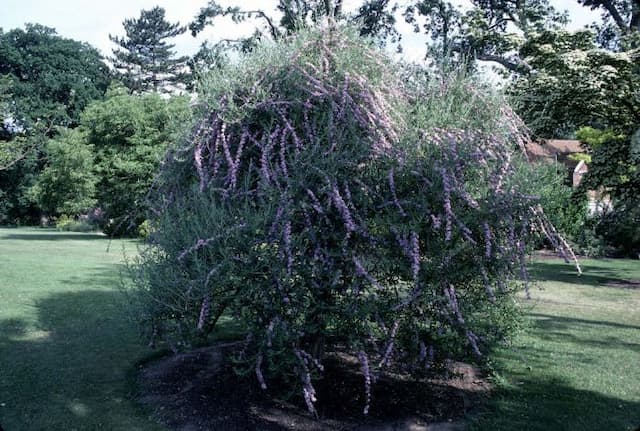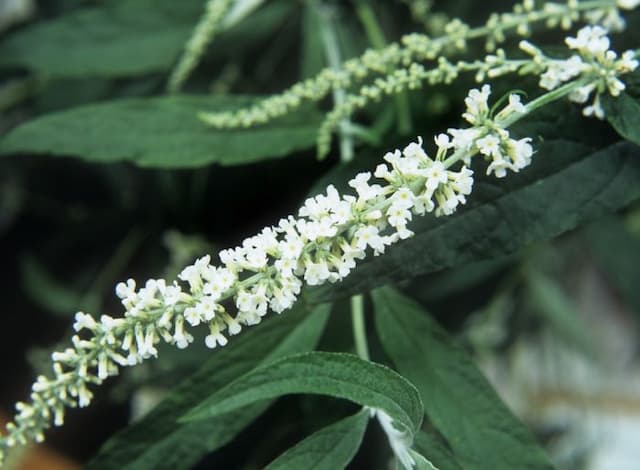Bacopa 'Snowflake' Chaenostoma cordatum 'Snowflake'

ABOUT
'Snowflake' is a trailing perennial with small, toothed, ovate leaves and racemes of white flowers over a long period in summer and autumn. (Shown here with Sutera Scopia Great Classic Pink 'Dancop46')
About this plant
 Names
NamesFamily
Scrophulariaceae
Synonyms
Bacopa, Sutera, Ornamental Bacopa, Snowflake Bacopa, Water Hyssop
Common names
Bacopa cordata, Sutera cordata, Sutera diffusa.
 Characteristics
CharacteristicsLife cycle
Annuals
Foliage type
Evergreen
Color of leaves
Green
Flower color
White
Height
6 inches (15 cm)
Spread
1 foot (30 cm)
Plant type
Herb
Hardiness zones
9
Native area
South Africa
Benefits
 General Benefits
General Benefits- Aesthetic Appeal: Adds visual interest with its delicate white flowers resembling snowflakes.
- Ground Cover: Can be used to cover bare areas of soil and suppress weeds.
- Bee-Friendly: Attracts pollinators like bees which are beneficial for the garden ecosystem.
- Drought Tolerance: Once established, it can tolerate periods of drought, reducing the need for frequent watering.
- Easy Propagation: Easily propagated from cuttings, making it simple to expand your garden or share with others.
- Long Blooming: Often flowers from spring through fall, offering prolonged periods of blossoms.
- Low Maintenance: Requires minimal care beyond basic watering and occasional fertilization.
- Edging Plants: Suitable for borders, edging and container planting, providing versatility in landscape design.
- Deer Resistance: Generally not preferred by deer, reducing the risk of damage to the plant.
- Seasonal Interest: Can remain evergreen in milder climates, contributing to winter garden interest where hardy.
 Medical Properties
Medical PropertiesThis plant is not used for medical purposes.
 Air-purifying Qualities
Air-purifying QualitiesThis plant is not specifically known for air purifying qualities.
 Other Uses
Other Uses- Basket weave filler: The stems and flowers of Bacopa 'Snowflake' can be used to add a delicate look when weaving baskets or creating natural art pieces.
- Photography prop: Due to its small, dense blossoms, Bacopa 'Snowflake' can be used to add a touch of elegance and texture in macro photography.
- Educational tool: This plant can be utilized in botany classes to teach about plant growth habits and trailing plant species.
- Natural confetti: The tiny white flowers can be dried and used as biodegradable confetti for eco-friendly celebrations.
- Fish tanks: Though not an aquatic plant, it can be used for aquascaping in fish tanks as a temporary decoration above the water line.
- Mini fairy gardens: Bacopa 'Snowflake' is ideal for creating enchanted miniature fairy garden scenes due to its small scale and whimsical appearance.
- Cooking garnish: While not known for being edible, the flowers could be used as a non-toxic garnish for culinary presentation, provided they have not been treated with pesticides.
- Artistic impressions: Artists could press the flowers and leaves to create natural pigments or textures in their work.
- Decorating candles: The small flowers can be pressed into the wax of handmade candles for decoration.
- Plant dye: Although not commonly known, the flowers might be used to create a light, plant-based dye for fabrics or papers.
Interesting Facts
 Feng Shui
Feng ShuiThe Bacopa is not used in Feng Shui practice.
 Zodiac Sign Compitability
Zodiac Sign CompitabilityThe Bacopa is not used in astrology practice.
 Plant Symbolism
Plant Symbolism- Purity: The delicate white flowers of the Bacopa 'Snowflake' evoke a sense of purity and innocence.
- Peace: Its soothing appearance has often been associated with tranquility and peace.
- Endurance: As a plant that thrives in various conditions, Bacopa 'Snowflake' can symbolize resilience and the ability to endure challenges.
- Hope: The bright flowers blooming even in challenging conditions can represent hope and optimism for the future.
 Water
WaterBacopa 'Snowflake' should be watered deeply and thoroughly, allowing the soil to become nearly dry between waterings. Generally, watering once a week is sufficient, but this may vary based on environmental conditions such as temperature and humidity. During hot, dry periods, bacopa may need watering twice a week. It's important to avoid waterlogging, so ensure the pot has adequate drainage to prevent root rot. Depending on pot size and climate, you might use about 16 ounces of water for smaller pots or up to 1 gallon for larger containers each time you water.
 Light
LightBacopa 'Snowflake' thrives in full to partial sunlight. It is best to place the plant in a spot where it will receive at least six hours of sunlight daily. However, in regions with very hot summers, some afternoon shade is beneficial to prevent the leaves from scorching. This plant is adaptable to various light conditions but flowering is most prolific when it gets plenty of light.
 Temperature
TemperatureBacopa 'Snowflake' prefers mild temperatures and can be sensitive to extreme heat or cold. The ideal temperature range for this plant is between 50 and 85 degrees Fahrenheit. It can survive minimum temperatures down to about 40 degrees Fahrenheit and maximum temperatures up to 90 degrees Fahrenheit, but extended exposure to these extremes can be detrimental to the plant's health.
 Pruning
PruningBacopa 'Snowflake' should be pruned to encourage bushiness and to remove any spent flowers or straggly growth. Pinching back the tips every few weeks during the active growing season can promote a fuller plant. The best time for major pruning is in early spring before new growth begins. Pruning not only shapes the plant but also stimulates new flowers and rejuvenates the overall appearance.
 Cleaning
CleaningAs needed
 Soil
SoilBacopa 'Snowflake' prefers a soil mix that is well-draining, light and rich in organic matter. A mixture of peat, perlite, and potting soil in equal parts works well. Aim for a slightly acidic to neutral pH, between 6.0 and 7.0.
 Repotting
RepottingBacopa 'Snowflake' typically needs repotting every one to two years. It's best done in spring, before the onset of rapid growth, or when the plant has outgrown its current container.
 Humidity & Misting
Humidity & MistingBacopa 'Snowflake' thrives in moderate to high humidity levels, ideally between 50% and 70%. Maintaining this level will encourage lush growth and abundant flowering.
 Suitable locations
Suitable locationsIndoor
Prefer bright, indirect light and consistent moisture.
Outdoor
Plant in partial shade, keep soil moist and protect from frost.
Hardiness zone
9-11 USDA
 Life cycle
Life cycleBacopa 'Snowflake' begins life as a seed germinating in warm, moist soil where it quickly establishes a root system and sprouts its first leaves. The seedling grows into a lush, trailing plant with numerous branches and small, oval leaves, which is highly adaptable to both container planting and ground cultivation in a sunny to a partly shaded location. After reaching maturity, Bacopa 'Snowflake' produces a profusion of small, delicate white flowers that cover the plant throughout the growing season, particularly from late spring to early fall, attracting pollinators. Following the flowering stage, seeds form and are dispersed, allowing for natural propagation if they land in a suitable growing environment. In areas with mild winters, Bacopa 'Snowflake' can behave as a perennial plant, while in colder climates, it is usually cultivated as an annual. The plant's life can be extended through cuttings that easily root in water or moist soil, making propagation simple for ongoing cultivation.
 Propogation
PropogationPropogation time
Spring-Summer
Chaenostoma cordatum 'Snowflake', commonly known as Bacopa 'Snowflake', is best propagated during the warm growing season, typically spring or early summer. Among the methods of propagation, the most popular for this plant is through stem cuttings. To propagate Bacopa 'Snowflake' by stem cuttings, a gardener should select a healthy, non-flowering stem and cut it just below a leaf node. The cutting should be about 3 to 5 inches (approximately 7.5 to 12.5 centimeters) long. The lower leaves should be removed, and the cut end can be dipped in rooting hormone powder to encourage root growth. Afterward, the stem cutting should be planted in a moist, well-draining potting mix, making sure at least one node is below the soil surface. With proper care, which includes keeping the soil consistently moist and providing indirect light, roots should develop within a few weeks.




![Butterfly bush [Florence]](/_next/image?url=https%3A%2F%2Fplants-admin.emdemapps.com%2Fimages%2Fplants%2F%2Fimages%2F604b5f52d7bb1.png&w=640&q=75)




